Disclosure: We may get commissions for purchases made through links in this post.
Homeowners who have asphalt on their driveways instead of pavers have to renew it over time. Laying asphalt isn't difficult, and most of the equipment necessary can be rented. The cost of the heavy machinery might be high, and homeowners will look for how to save costs. As a homeowner, you might wonder if you can put new asphalt on old asphalt. We've researched and got some answers from experts.
Technically, you can put new asphalt on the old one. It'll save you a lot of time and money. But ideally, you should remove the old asphalt completely and lay a fresh coat of asphalt. By doing this, you'll be sure that no cracks and dents were overlooked.
Experts strongly recommend replacing the asphalt altogether. Continue reading to see why ripping up the old asphalt will be necessary and where it won't be.
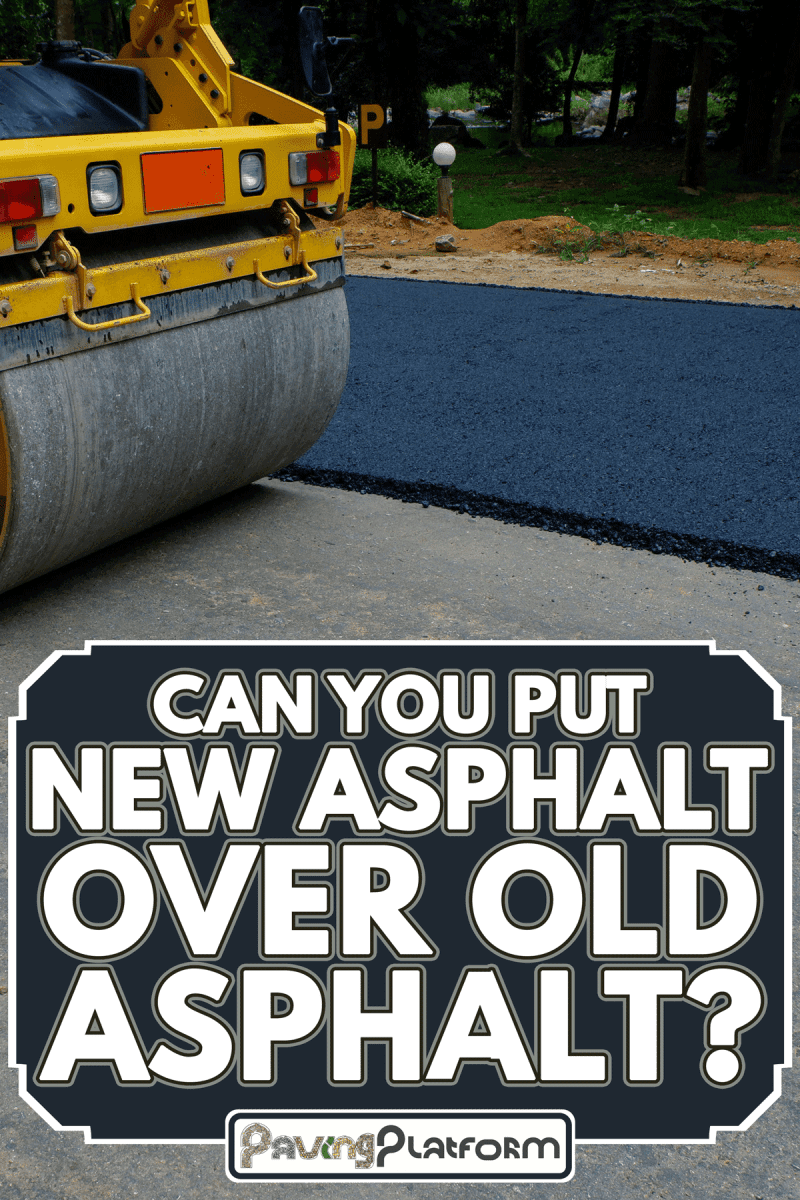
New Asphalt Over Old
Asphalt is highly flexible. Therefore, putting new asphalt on old asphalt will cause the new one to mimic all the dents.
Driveways, garages, or walkways with asphalt will wear out with time. Some existing asphalt can still maintain structural integrity and work as a fantastic base for the new asphalt. However, damaged areas should be thoroughly treated and completely have new asphalt laid.
You can put a thin layer of asphalt to even out the old surface before putting on the new one. The tack coat, as it is known, glues the two layers of asphalt together.
How Thick Should The New Asphalt Be?
A new coat of asphalt or overlay should be about one and a half inches thick. But this isn't the maximum. Depending on your project, the asphalt layer might be thicker. The overlay can be as thick as two inches.
The main goal of a thin layer of asphalt is to increase the skid resistance of the asphalt as a whole.
How To Overlay Asphalt
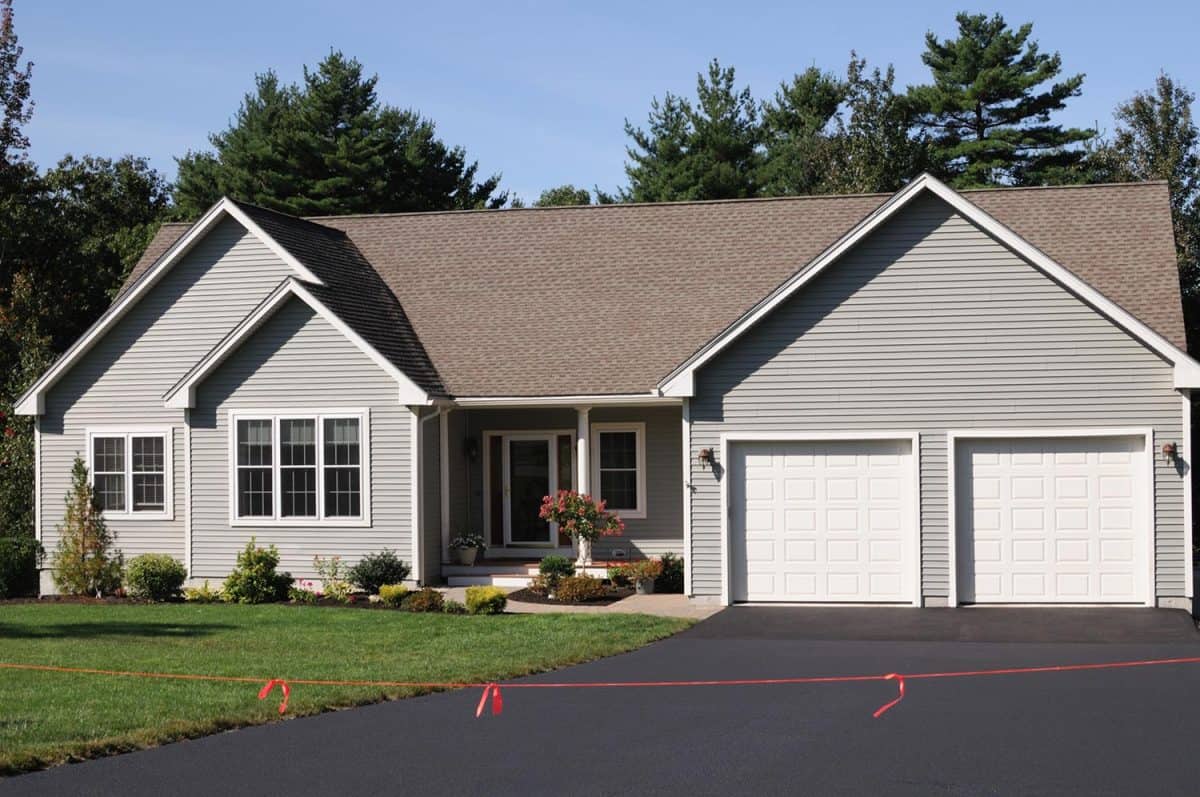
To overlay new asphalt on old existing asphalt can be done relatively fast and easy. First-time DIYers can undertake the project with thorough preparation. Here are simple steps that you can follow:
- Assemble all the equipment and put on protective gear when working with the asphalt.
- Ensure that you prep the driveway. Cut and uproot any weeds sticking out in cracks or at the edge of the driveway. Remove algae and any debris on the surface.
- After the preparation of the surface has been completed, put a thin layer of tack coat. Don't skip the tack coat as it acts as a bonding agent. To accelerate work, use a spray machine.
- Next, you should put down the leveling course. It's a thin layer of asphalt that seals all the dents and holes in the existing asphalt. To pour the leveling course, set the machine to zero inches. You might need to put a leveling course on the entire surface, depending on the asphalt condition.
- Leveling course is then compacted. Experts instruct you to use the vibratory roller.
- Finally, put the wearing course of the asphalt. Ensure that the edges are well compacted.
Here's a video that shows how to do asphalt overlaying:
Asphalt Overlaying Vs. Resurfacing
Technically, asphalt overlaying is the same as resurfacing. In some accounts, you'll find that instead of adding a new layer of asphalt, experts advise using a resurfacer or sealer. A sealer or resurfacer is a polymer-enhanced asphalt mixture. The polymers help the mixture to stick to the old asphalt. Sand is added for traction.
Here's a popular driveway sealer on Amazon.
When using a sealer or resurfacer, you'll prep the area in a similar fashion as when overlaying with asphalt. But instead of using asphalt to seal the dents and cracks, you should use a crack filler plus a liquid elastomeric crack filler. The liquid elastomeric is a substance that works well in conjunction with the resurfacer or sealer.
Click here to see this asphalt crack filler on Amazon.
Note: Before you decide whether to use a sealer or asphalt, invite a professional for a proper evaluation of your driveway.
Watch this video that highlights the steps to resurface a driveway:
Repaving An Asphalt Driveway
Repaving your driveway is a colossal project which will need heavy machinery. Before embarking on such a huge project, look up the labor cost and duration of the project. You might decide to repave your driveway by yourself. Before commencing, ensure that you have the right tools.
Click here to see this jack hammer on Amazon.
You can use a jackhammer or a circular saw to cut up and remove the asphalt. However, large equipment meant for this job is necessary. Such equipment can be rented from a rental store or you can use the services of a professional.
When you hire a professional to repave your driveway, you should expect the following:
- The professional asphalt laying company will access the wear and tear of the old asphalt.
- Calculate the amount of work to be done, labor cost, and equipment needed.
- Deconstruction of the old asphalt may be required, so need to prep the driveway for a new layer of asphalt.
- The new asphalt will be then laid out, and all aspects of drainage are taken into account.
Homeowners can compare and contrast different driveway paving options.
You can watch this video to get a glimpse of the process:
Asphalt Terminologies
Terminologies are everywhere. The words in asphalt laying might be confusing. Experts advise homeowners to have a fair understanding of these terminologies to avoid being swindled or conned.
Homeowners should understand the asphalt laying process (whether new or old driveways) and terminologies if they wish to embark on a DIY project.
Here are the most common words you'll hear and what they mean:
- Asphalt: This is a dark gooey tar-looking substance seen on roads, pavements, or driveways.
- Asphalt Base Course: The base course is an asphalt mixture with larger stones. This mixture is laid at the very bottom.
- Aggregates: Stones of different sizes are what are referred to as aggregates. They consist of gravel and crushed rock. The asphalt mixture contains 96% of these stones.
- Asphalt Cement: The remaining 4% of the asphalt mixture is asphalt cement. It's a byproduct of petroleum that has a sticky look and feel.
- Blacktop: In Asphalt laying, the term is another word for asphalt.
- Base: The base includes the materials used before asphalt is laid. In residential driveways, the base is usually three to four inches.
- Cracking: When asphalt is exposed to elements over time, it is said to be cracking.
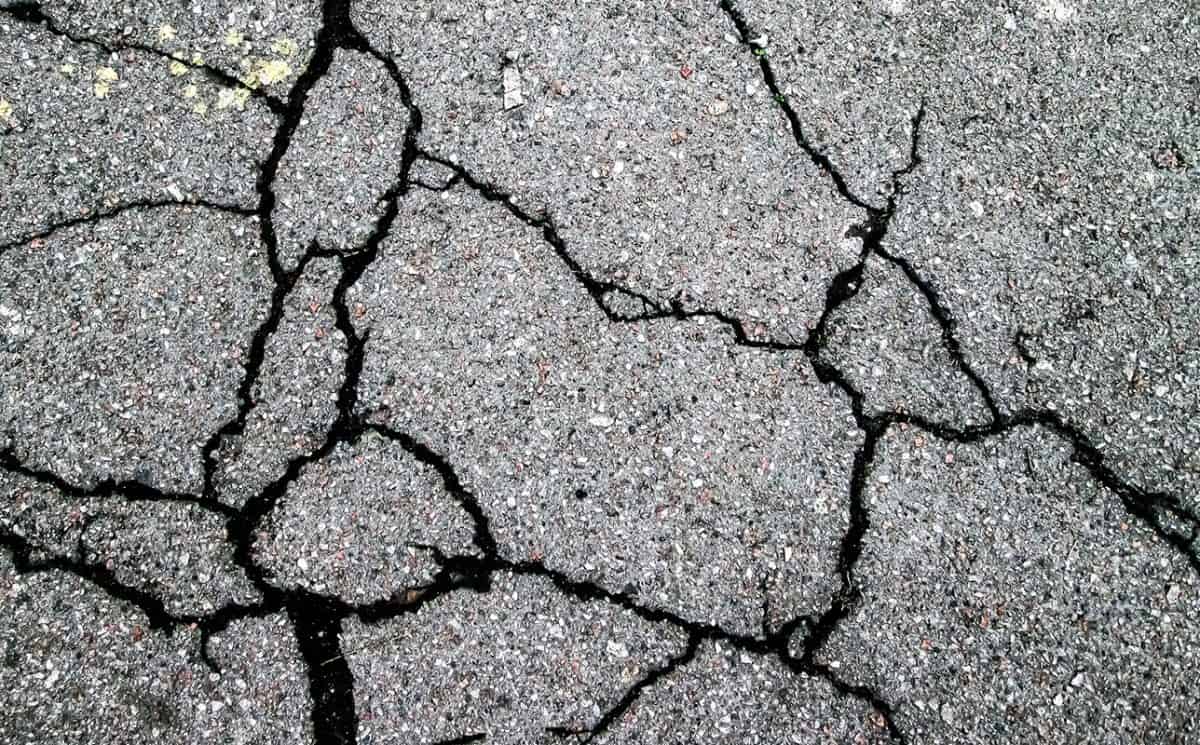
Being conversant with the terminologies in asphalt laying helps the homeowner to understand the process better.
Maintaining An Asphalt Driveway
Asphalt driveways aren't very popular. Homeowners with asphalt driveways know that they too need maintenance.
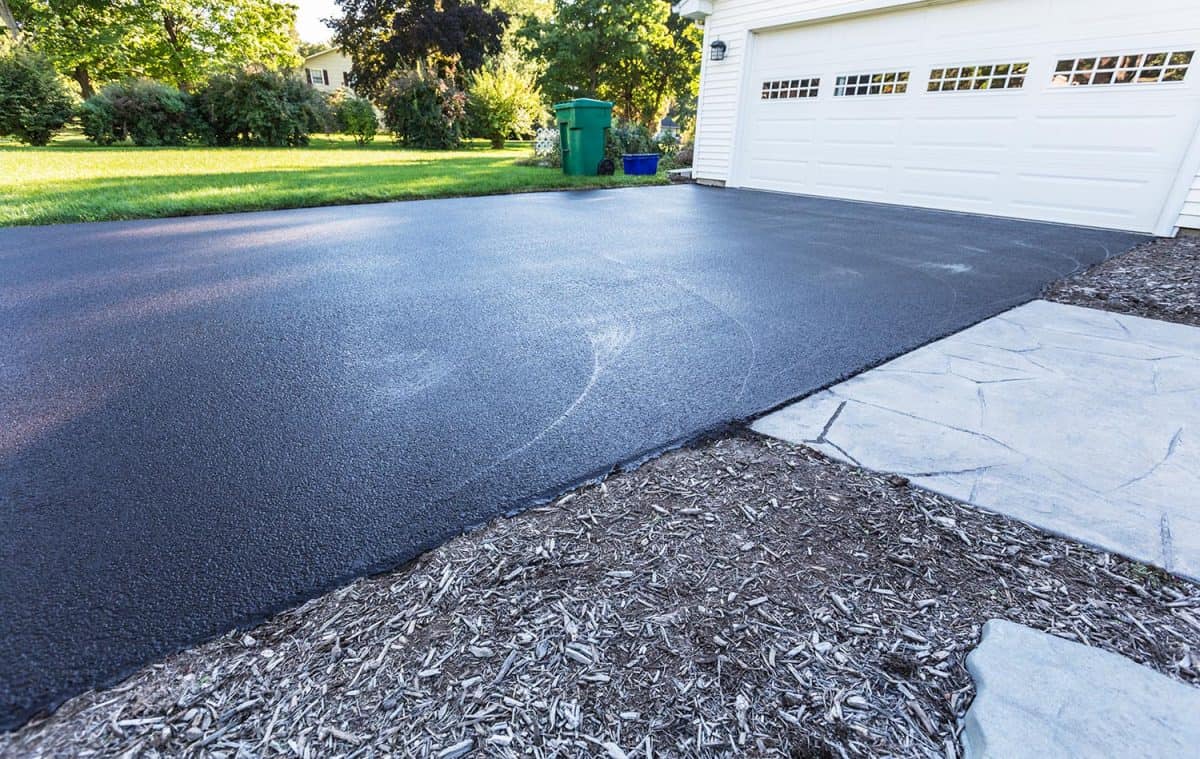
The first fortnight upon asphalt installation is the most critical. Fresh asphalt is very vulnerable and shouldn't be driven on. Any unprecedented pressure will destabilize and damaged the asphalt.
How can you ensure that your asphalt driveway serves you for the longest time possible? The following pointers are crucial in maintaining an asphalt driveway:
- Don't park on it until it cures properly.
- Don't park during the hottest hours.
- Install asphalt during the warmer months.
- Clean stains from thoroughly cured asphalt properly.
- Systematically repair cracks.
- Never leave puddles of stagnant water on your driveway.
- After the asphalt has cured, use a high-quality seal.
Homeowners should conduct visual inspections often to ensure that the asphalt condition doesn't deteriorate.
Can You Put An Asphalt Layer On A Concrete Driveway?
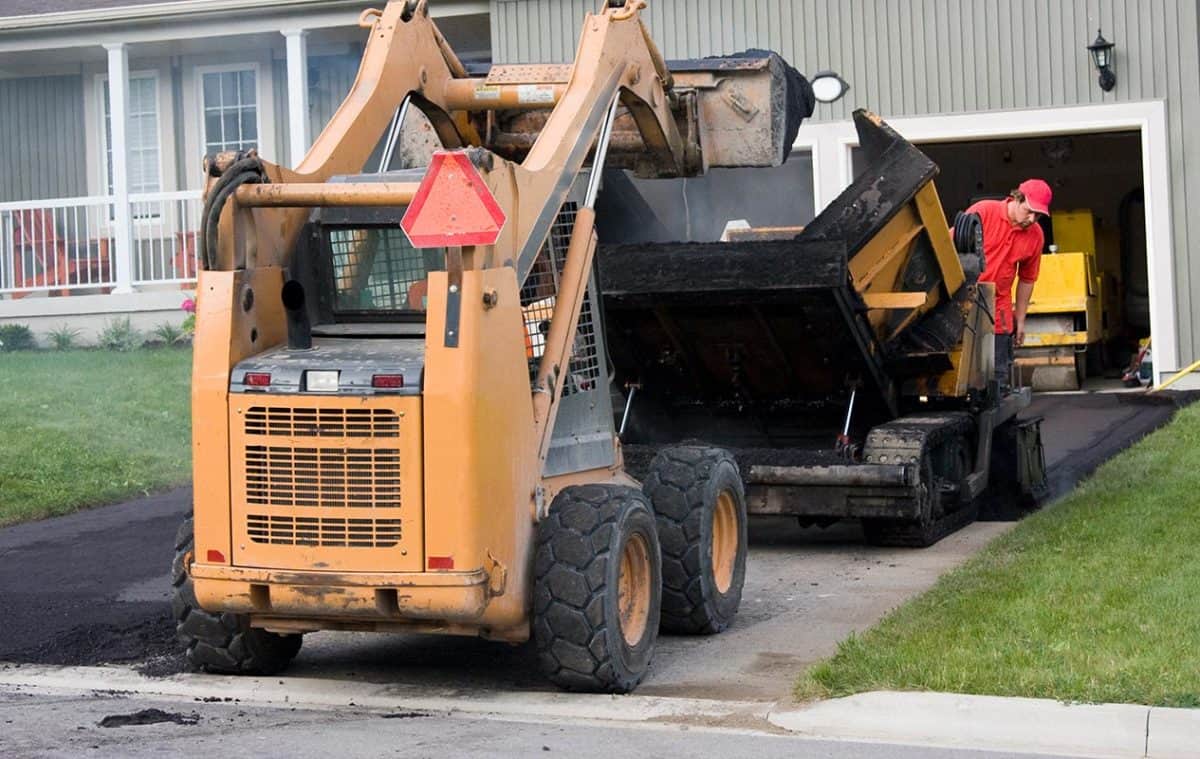
The long and short answer is yes, you can. Experts request homeowners to put into consideration some factors before putting asphalt on concrete.
Concrete isn't a stable material. Temperature fluctuations will cause the concrete to expand and contract. The expansion and contraction of concrete make it an unstable base. Cracks might appear, and that isn't ideal for asphalt laying. Asphalt needs a compact base while concrete doesn't.
These factors might not deter you, but they shouldn't be ignored. Consult a professional for guidance on how to lay asphalt on concrete if you choose to do so.
In Closing
You can upgrade your driveway by putting a fresh new coat of asphalt on the existing one. Take your time to think the project through if it's a DIY project. Invite friends over to help you and rent the necessary equipment.
A professional evaluation of your driveway is important. If your driveway needs a thorough revamping, don't hesitate to engage the services of professionals. You should let your asphalt cure well and maintain your driveway regularly.
For more insight, check out these other posts:




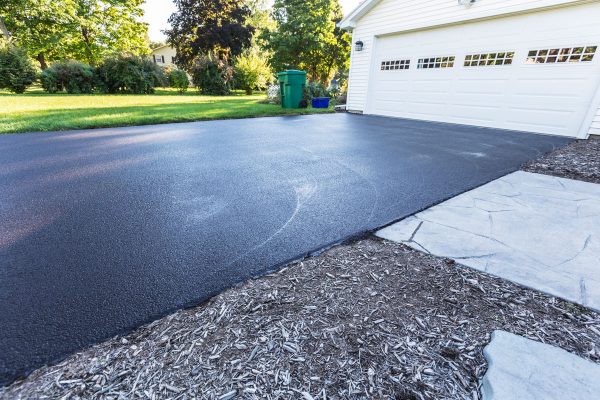
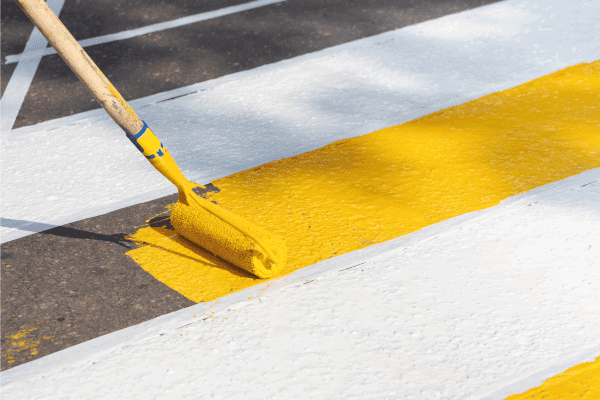
![Two manual workers helping to level the asphalt surface for a steamroller to press, Types Of Asphalt [And How To Choose For Your Driveway Or Walkway]](https://pavingplatform.com/wp-content/uploads/2022/03/Two-manual-workers-helping-to-level-the-asphalt-surface-for-a-steamroller-to-press-600x400.jpg)